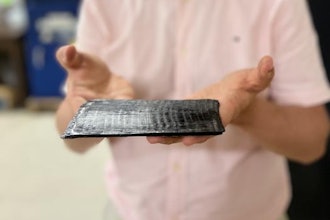
Recently, "Yuanhai Kou," China's largest ocean-going cargo ship, SOLAR+LNG dual-fuel car carrier, embarked on its maiden voyage from Nansha, Guangzhou. The vessel is fully loaded with vehicles produced by Chinese brands, over 90% of which are new energy vehicles, heading to countries such as Greece, Turkey, Italy, and Tunisia. LONGi, a global leader in solar technology, provided PV modules for the ship, helping create a globally leading model of low-carbon intelligent shipping.
The "Yuanhai Kou" measures 199.9 meters in total length, with a gross tonnage of 68,252 tons and a displacement of 39,069 tons. It features 12 vehicle decks, including 8 fixed decks and 4 movable decks, with a loading capacity of 7,000 standard car parking spaces. It can carry all types of vehicles such as sedans, engineering vehicles, and buses, as well as MAFI cargo.
As China's largest PV+LNG energy car carrier, the "Yuanhai Kou" boasts green, low-carbon performance. In addition to adopting an advanced LNG (liquefied natural gas) dual-fuel main engine, it is equipped with a distributed PV system with a peak power of 302.8 kilowatts, currently the largest photovoltaic system installed on similar vessels.
The distributed PV system installed on the "Yuanhai Kou" is equipped with LONGi's Sea-Shield series modules, which make full use of the upper deck space of the ship. More than 500 PV panels are installed throughout the ship, providing stable clean energy for the it's lighting, communication, and other equipment. This PV system generates 410,000 kWh of electricity annually, saving approximately 111 tons of fuel and reducing carbon dioxide emissions by 345.9 tons, equivalent to planting about 38,000 trees annually.
Aiming at the shipborne scenarios with high salt spray, high humidity, and strong vibration at sea, the Sea-Shield series modules significantly enhance their salt spray resistance and waterproof performance through anti-corrosion frame materials, enhanced sealing processes, and special junction box designs.






















